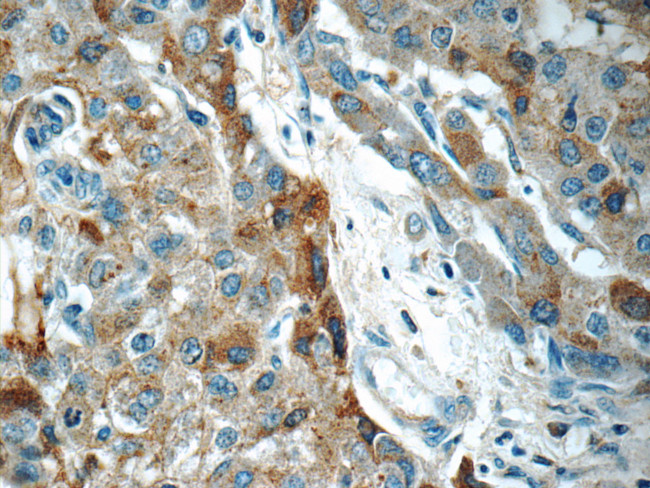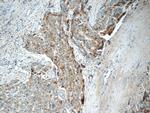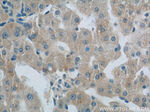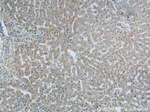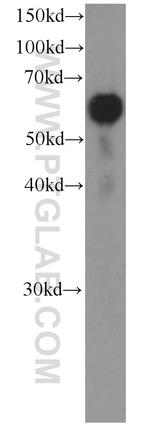Search Thermo Fisher Scientific
Product Details
66181-1-IG
Species Reactivity
Host/Isotype
Class
Type
Clone
Immunogen
Conjugate
Form
Concentration
Purification
Storage buffer
Contains
Storage conditions
Shipping conditions
Product Specific Information
Immunogen sequence: SFDVSVKGI SISVNLLLGS ESSGRPTVTA SSCSSDIADV EVDMSGDLGW LLNLFHNQIE SKFQKVLESR ICEMIQKSVS SDLQPYLQTL PVTTEIDSFA DIDYSLVEAP RATAQMLEVM FKGEIFHRNH RSPVTLLAAV MSLPEEHNKM VYFAISDYVF NTASLVYHEE GYLNFSITDD MIPPDSNIRL TTKSFRPFVP RLARLYPNMN LELQGSVPSA PLLNFSPGNL SVDPYMEIDA FVLLPSSSKE PVFRLSVATN VSATLTFNTS KITGFLKPGK VKVELKESKV GLFNAELLEA LLNYYILNTF YPKFNDKLAE GFPLPLLKRV QLYDLGLQIH KDFPSRRDHP P (128-477 aa encoded by BC022256)
Target Information
The LBP protein is involved in the acute-phase immunologic response to gram-negative bacterial infections. Gram-negative bacteria contain a glycolipid, lipopolysaccharide (LPS), on their outer cell wall. Together with bactericidal permeability-increasing protein (BPI), the encoded protein binds LPS and interacts with the CD14 receptor, probably playing a role in regulating LPS-dependent monocyte responses. This protein is part of a family of structurally and functionally related proteins, including BPI, plasma cholesteryl ester transfer protein (CETP), and phospholipid transfer protein (PLTP). Finally, this gene is found on chromosome 20, immediately downstream of the BPI gene.
For Research Use Only. Not for use in diagnostic procedures. Not for resale without express authorization.
References (0)
Bioinformatics
Protein Aliases: BPI fold containing family D, member 2; LBP; Lipopolysaccharide-binding protein; LPS-binding protein
Gene Aliases: BPIFD2; LBP
UniProt ID: (Human) P18428
Entrez Gene ID: (Human) 3929

Performance Guarantee
If an Invitrogen™ antibody doesn't perform as described on our website or datasheet,we'll replace the product at no cost to you, or provide you with a credit for a future purchase.*
Learn more
We're here to help
Get expert recommendations for common problems or connect directly with an on staff expert for technical assistance related to applications, equipment and general product use.
Contact tech support
